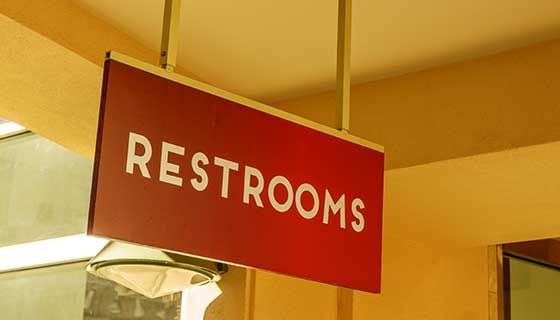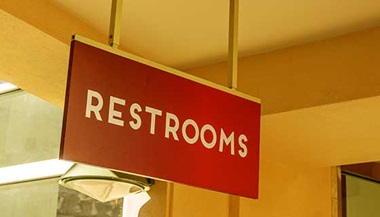Urinary Incontinence in Women
Urinary Incontinence in Women: What You Need to Know
-
Urinary incontinence is the accidental loss of urine.
-
Over 25 million adult Americans experience temporary or chronic urinary incontinence.
-
This condition can occur at any age, but it is more common in women over the age of 50.
-
There are four types of urinary incontinence: urgency, stress, functional and overflow incontinence.
-
Behavioral therapies, medications, nerve stimulation and surgery are some of the treatments available for managing urinary incontinence.
What is urinary incontinence?
Urinary incontinence (UI) is the accidental loss of urine. According to the National Association for Continence, over 25 million adult Americans experience temporary or chronic urinary incontinence. UI can occur at any age, but it is more common among women over 50. Urinary incontinence may be a temporary condition that results from an underlying medical condition. It can range from the discomfort of slight losses of urine to severe, frequent wetting.
What causes urinary incontinence?
Urinary incontinence is not an inevitable result of aging, but it is particularly common in older people. It is often caused by specific changes in body function that may result from diseases, use of medications and/or the onset of an illness. Sometimes it is the first and only symptom of a urinary tract infection. Women are most likely to develop urinary incontinence during pregnancy and after childbirth, or after the hormonal changes of menopause.
What are some of the different types of urinary incontinence?
The following are some of the different types of urinary incontinence:
-
Urgency incontinence: This is the inability to hold urine long enough to reach a restroom. It can be associated with having to urinate often and feeling a strong, sudden urge to urinate. It can be a separate condition, but it may also be an indication of other diseases or conditions that would also warrant medical attention.
-
Stress incontinence: This is the leakage of urine during exercise, coughing, sneezing, laughing, lifting heavy objects or performing other body movements that put pressure on the bladder.
-
Functional incontinence: This is urine leakage due to a difficulty reaching a restroom in time because of physical conditions, such as arthritis, injury or other disabilities.
-
Overflow incontinence. Leakage occurs when the quantity of urine produced exceeds the bladder’s capacity to hold it.
What are the symptoms of urinary incontinence?
The following are common symptoms of urinary incontinence. However, each individual may experience symptoms differently. Symptoms may include:
-
Needing to rush to the restroom and/or losing urine if you do not get to the restroom in time
-
Urine leakage with movements or exercise
-
Leakage of urine that prevents activities
-
Urine leakage with coughing, sneezing or laughing
-
Leakage of urine that began or continued after surgery
-
Leakage of urine that causes embarrassment
-
Constant feeling of wetness without sensation of urine leakage
-
Feeling of incomplete bladder emptying
The symptoms of urinary incontinence may resemble other conditions or medical problems. Always consult your doctor for a diagnosis.
7 Things You Should Always Discuss with Your Gynecologist

When it comes to sexual and reproductive health, it can be hard to know what’s “normal” and what may be a sign of a potential health problem. Even if you feel embarrassed about certain issues, your gynecologist has seen and heard it all and is there to help you, not to pass judgment.
How is urinary incontinence diagnosed?
For people with urinary incontinence, it is important to consult a health care provider. In many cases, patients will then be referred to an urogynecologist or urologist, a doctor who specializes in diseases of the urinary tract. Urinary incontinence is diagnosed with a complete physical examination that focuses on the urinary and nervous systems, reproductive organs, and urine samples.
What is the treatment for urinary incontinence?
Specific treatment for urinary incontinence will be determined by your doctor based on:
-
Your age, overall health and medical history
-
Type of incontinence and extent of the disease
-
Your tolerance for specific medications, procedures or therapies
-
Expectations for the course of the disease
-
Your opinion or preference
Treatment may include:
-
Behavioral therapies:
-
Bladder training: Teaches people to resist the urge to void and gradually expand the intervals between voiding.
-
Toileting assistance: Uses routine or scheduled toileting, habit training schedules and prompted voiding to empty the bladder regularly to prevent leaking.
-
-
Diet modifications: Eliminating bladder irritants, such as caffeine, alcohol and citrus fruits.
-
Pelvic muscle rehabilitation (to improve pelvic muscle tone and prevent leakage):
-
Kegel exercises: Regular, daily exercising of pelvic muscles can improve, and even prevent, urinary incontinence.
-
Biofeedback: Used with Kegel exercises, biofeedback helps people gain awareness and control of their pelvic muscles.
-
Vaginal weight training: Small weights are held within the vagina by tightening the vaginal muscles.
-
Pelvic floor electrical stimulation: Mild electrical pulses stimulate muscle contractions.
-
-
Medication :
-
Anticholinergic medications
-
Vaginal estrogen
-
-
Pessary (small rubber device that is worn inside the vagina to prevent leakage)
-
Office procedure
-
Botox injections into bladder
-
Urethral bulking agents
-
Peripheral nerve stimulation
-
-
Surgery
-
Slings (may be made from synthetic mesh or from your own tissue)
-
Bladder suspension
-
Peripheral nerve stimulation
-
Consult your doctor with questions regarding the management and treatment of urinary incontinence.
Sling Surgery Restores A Patient to Active Life | Stephanie's Story
After suffering stress incontinence in silence for 15 years, patient Stephanie Richards sought surgery from Danielle Patterson, M.D., of the Women's Center for Pelvic Health, to restore bladder control and return to the active lifestyle she had always enjoyed.






